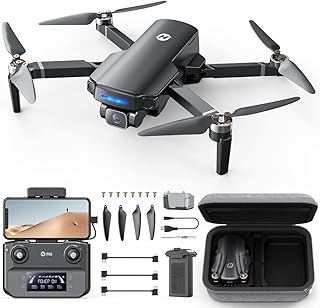The Legal Landscape of Drones: Regulations and Restrictions
Drones, also known as unmanned aerial vehicles (UAVs), have revolutionized various industries, from photography and videography to delivery and surveillance. However, their growing popularity has also led to a complex legal landscape with varying regulations and restrictions across different countries and jurisdictions.
Here's a breakdown of key regulatory areas:
1. Federal Aviation Administration (FAA) Regulations (United States):
* Registration: All drones weighing over 0.55 lbs must be registered with the FAA.
* Licensing: Pilots must obtain a Remote Pilot Certificate (Part 107) to operate drones commercially.
* Operating Limitations: Drones must be operated within visual line of sight (VLOS), during daylight hours, and at a maximum altitude of 400 feet.
* No Fly Zones: Drones are prohibited from operating near airports, national parks, and other sensitive areas.
* Privacy Concerns: The FAA has guidelines regarding drone use for photography and videography, emphasizing respecting individuals' privacy.
2. International Regulations:
* ICAO (International Civil Aviation Organization): Provides global standards for drone operations, including airspace management and communication procedures.
* EU (European Union): Has implemented regulations for drone operation, emphasizing safety and privacy concerns.
* Individual Countries: Many countries have developed their own specific regulations, often mirroring international standards but adapting them to local circumstances.
3. Key Areas of Regulation:
* Safety: Regulations focus on preventing accidents, ensuring drones operate safely in the airspace, and minimizing risks to people and property.
* Privacy: Regulations address concerns regarding data collection and the use of drones for surveillance, emphasizing the right to privacy.
* Security: Regulations aim to mitigate potential security threats posed by drones, including their use for illegal activities like smuggling or terrorism.
* Environmental: Regulations address potential environmental impacts of drone operations, such as noise pollution and wildlife disturbance.
4. Challenges and Future Developments:
* Balancing Innovation and Regulation: Finding a balance between fostering drone technology development and implementing effective regulations to ensure safety and security remains a challenge.
* Emerging Technologies: The emergence of advanced technologies like autonomous flight and drone swarms necessitates adapting regulations to keep pace with innovation.
* International Cooperation: Harmonizing regulations across countries is crucial for the smooth operation of drones in international airspace.
* Public Awareness: Public education on drone safety, regulations, and responsible usage is essential to promote public acceptance and minimize conflicts.
5. Resources and Information:
* FAA (United States): [https://www.faa.gov/uas/](https://www.faa.gov/uas/)
* ICAO (International): [https://www.icao.int/](https://www.icao.int/)
* EU (European Union): [https://ec.europa.eu/transport/modes/air/safety/drone-operations_en](https://ec.europa.eu/transport/modes/air/safety/drone-operations_en)
In summary, the legal landscape of drones is dynamic and evolving. Staying informed about the latest regulations and restrictions in your jurisdiction is crucial for responsible and legal operation.


